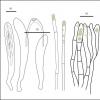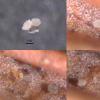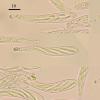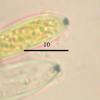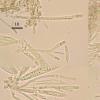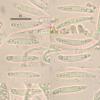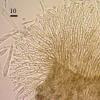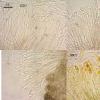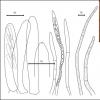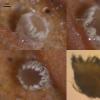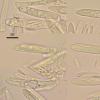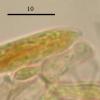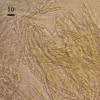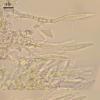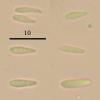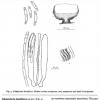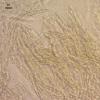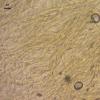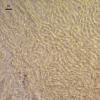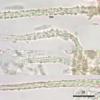
23-10-2025 20:59
Patrice TANCHAUDBonsoir, est-ce que quelqu'un posséderait un com

24-10-2025 14:50
 Riet van Oosten
Riet van Oosten
Hello, Found by Laurens van der Linde, Oct. 2025

24-10-2025 03:11
 Francois Guay
Francois Guay
I found this fungus growing on decaying conifer wo

20-10-2025 09:36
 Nicolas VAN VOOREN
Nicolas VAN VOOREN
Hello.I'm searching for the following article:Bene

21-10-2025 23:13
F. JAVIER BALDA JAUREGUIHello to everyone.Did you think it could, be a pyx

22-10-2025 14:45
Lukas VerboomDear all,I collected this in the Netherlands, on t

22-10-2025 11:13
Jean-Luc RangerBonjour, Petites boules plus ou moins sphériqu

21-10-2025 21:25
Philippe PELLICIERBonjour,J'ai récolté en septembre sur une litiè
Two new on Andromeda
Nina Filippova,
07-07-2013 06:48
First one has very tiny, stipitate apothecia:
Apothecia cupulate, stipitate, tiny, single on lower leaf side, receptacle white, powdery, stipe brownish, about 130 mk high, the same broad.
Excipulum from textura porrecta, hyphae walls are thick, at stem are brown, 2.5 broad, end cells fusoid, obtuse, near 15 x 4.5, with vacuoles; asci clavate, with not clear clamp, 60–71.5 x 8–9.8; paraphyses cylindrical, septated in lower part, rarely branched, in upper part with small ellipsoid or round vacuoles, and some enlarged, 62 x 2.8; spores fusoid, heteropolar, with upper end obtuse and lower narrowed, with many small oils, 16.7 (14.6–19.6) x 2.8 (2.4–3.1) (n=13).
Nina Filippova,
07-07-2013 07:03
Re : Two new on Andromeda
And the second forms sessile broad hairy cups:
Apothecia cupulate, sessile, 250–550 mk in diameter, disc surface watery-translucent or grayish, outer surface with the same underlaying layer and outer layer of dense white hairs, hairs raised under hymenium forming dense pubescent ciliate edge.
Excipulum from thick-walled textura prismatica, upper part with hairs; hairs cylindrical, thick-walled, segmented, rough, 4 broad, obtuse; asci cylindrical, clamped, with small euamyloid ring, 35–49.4 x 6–8.3; paraphyses lanceolate, segmented in lower part, many-vacuolate, 44.7–85.2 x 3.9–4.9; spores pip-shaped, 9.3 (8–11.8) x 2.1 (1.5–2.6) (n=14).?
Apothecia cupulate, sessile, 250–550 mk in diameter, disc surface watery-translucent or grayish, outer surface with the same underlaying layer and outer layer of dense white hairs, hairs raised under hymenium forming dense pubescent ciliate edge.
Excipulum from thick-walled textura prismatica, upper part with hairs; hairs cylindrical, thick-walled, segmented, rough, 4 broad, obtuse; asci cylindrical, clamped, with small euamyloid ring, 35–49.4 x 6–8.3; paraphyses lanceolate, segmented in lower part, many-vacuolate, 44.7–85.2 x 3.9–4.9; spores pip-shaped, 9.3 (8–11.8) x 2.1 (1.5–2.6) (n=14).?
Hans-Otto Baral,
07-07-2013 09:34

Re : Two new on Andromeda
The first looks lke a Calycellina from the asci, probably C. leucella, though the olivaceous base looks strange.
Just I see that I placed the description of Allophylaria basalifusca in my leucella folder. So this should be what you have collected. But anyhow I am not sure that it is different from leucella which also shows some gel in the excipulum.
For the second a closeup of the hairs might be helpful.
Zotto
Just I see that I placed the description of Allophylaria basalifusca in my leucella folder. So this should be what you have collected. But anyhow I am not sure that it is different from leucella which also shows some gel in the excipulum.
For the second a closeup of the hairs might be helpful.
Zotto
Nina Filippova,
08-07-2013 06:35
Hans-Otto Baral,
08-07-2013 08:12

Re : Two new on Andromeda
There is only 1 species on Andromeda leaves in my database with a similar spore size: Lachnum fuscidulum (Dennis 1973: 346), but that is clearly a Brunnipila, with stalked apothecia and thick-walled hairs with capitate apex.
So no idea about this fungus. The hairs are coarsly warted similar as in Proliferodiscus, but lanceolate paraphyses are unknown there, and sessile apothecia also.
Zotto
So no idea about this fungus. The hairs are coarsly warted similar as in Proliferodiscus, but lanceolate paraphyses are unknown there, and sessile apothecia also.
Zotto
